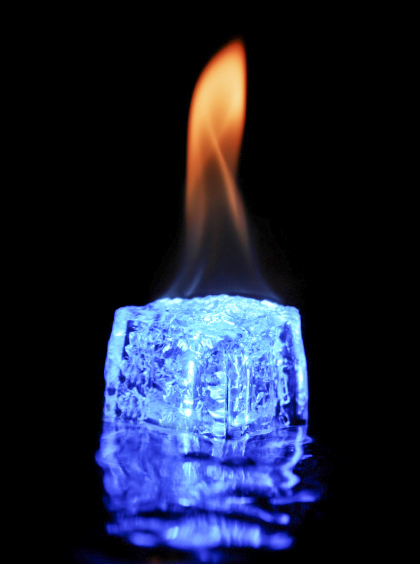
Did you know natural gas, specifically methane, could be frozen? And not by machinery, but by nature? Under the oceans of Japan, New Zealand, and the Arctic are natural deposits of this very thing: methane hydrate, or frozen liquid gas.
The subject of methane hydrates is something that my readers and I have discussed over the years. Back in 2006, and then again a few years ago. Each time we came to the same conclusion: we’re still a long way from commercial production.
Or are we?
Make no mistake about the potential here. Methane hydrates could be a massive fuel supply in the future – but only if we can figure how to extract it!
Japan Oil, Gas and Metals National Corp. reported in 2013 that they had used a depressurization method to acquire gas from one of their deposits off the coasts of their Atsumi and Shima Peninsula.
This experiment has lead to an eleven-firm joint venture to find consistent, safe techniques to extract more gas from their estimated 40 trillion cubic feet of methane reserves.
Similarly, New Zealand has discovered large deposits of the frozen gas in underwater landslides. Using 2D and 3D seismic and echosounder technology, they discovered that the landslides could be releasing the gas into the air and causing gas flares in columns of up to 800 feet.
The next venture is planned for 2016, and will include drilling into the landslides to determine if the ice gas is recoverable through controlled means.
Meanwhile, one geologist at the University of New Hampshire made another interesting discovery: methane that isn’t produced from decomposing carbon, but from the reaction between seawater and hot mantle-derived rocks.
This type of frozen gas is found much deeper underwater, and thus less likely to escape like the methane in New Zealand. But this also makes it much harder to extract.
Since even the most available sources in Japan and New Zealand are still just crawling into understanding, it will be a long while — 2023 at least — before this kind of fuel is efficient to extract and sell commercially.
To continue reading…





